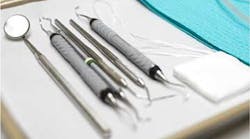Oral bacterium possibly associated with systemic disease found in Alabama schoolchildren
Samples were collected from schoolchildren between the ages of 5 and 10 as part of an ongoing longitudinal epidemiological study of S. mutans. A total of 57 children were tested with primers specific to each serotype and collagen-binding proteins. The study found serotypes c (84%), e (3%), and k (11%), with no serotype f observed. Two samples were determined to be untypeable. Although the bacteria evaluated in this study were all missing the collagen-binding proteins suggested to link S. mutans serotype k and systemic disease, some scientists propose these genes may be acquired over time or that these organisms could have other unknown proteins possibly associated with systemic disease. Momeni says further study is needed to determine if the S. mutans serotype k strains found in this study have other invasive qualities associated with systemic diseases. Furthermore, she adds, the prevalence of serotype k reported in this study may be conservative since only individual bacterial isolates were tested. This number could be considerably higher when more oral isolates are analyzed from each individual. For more information about UAB, visit their website.






